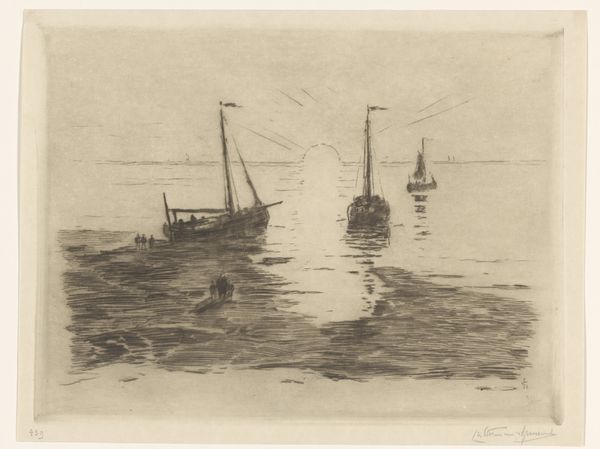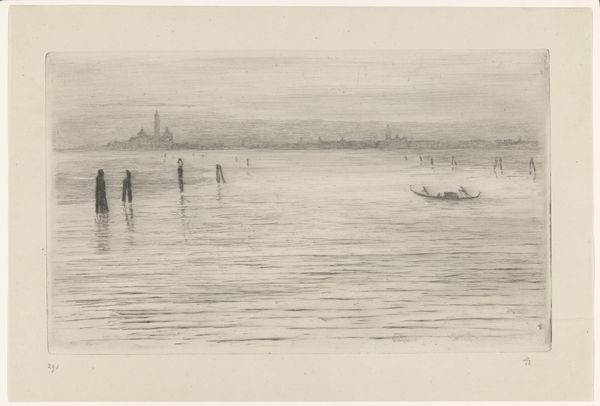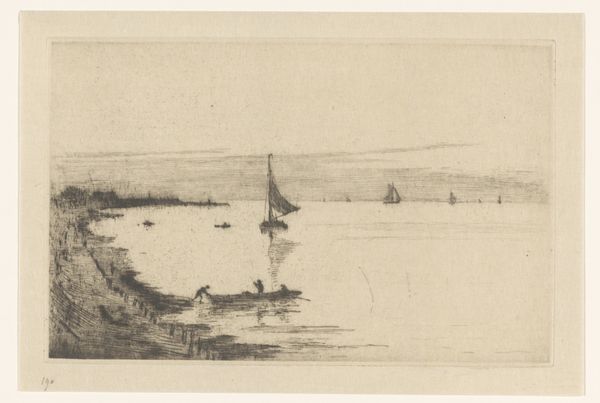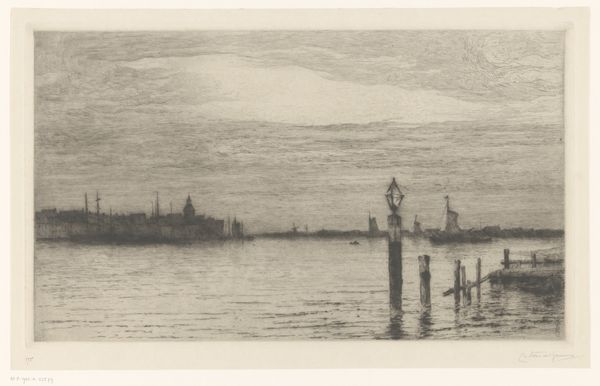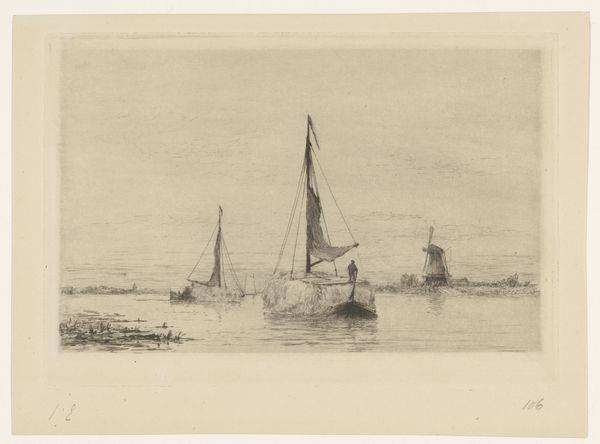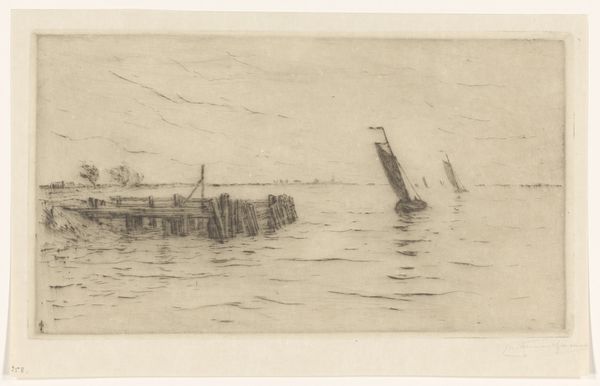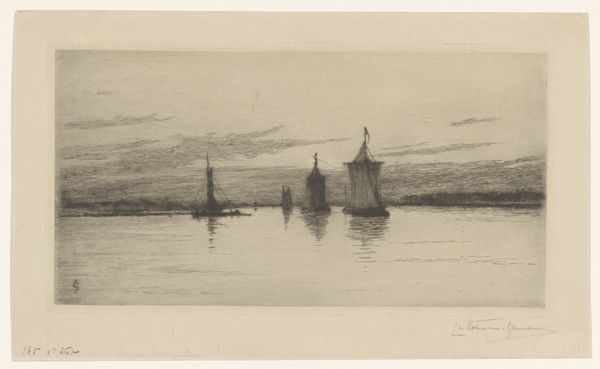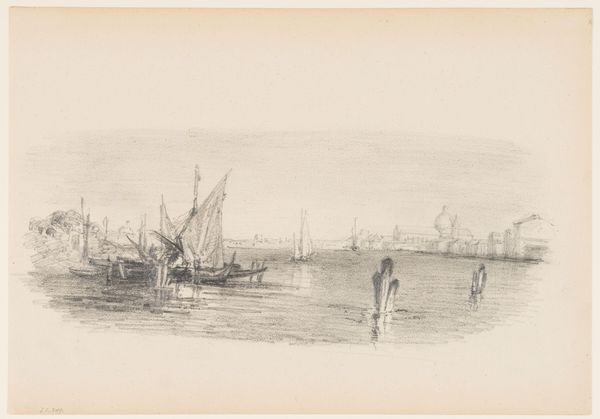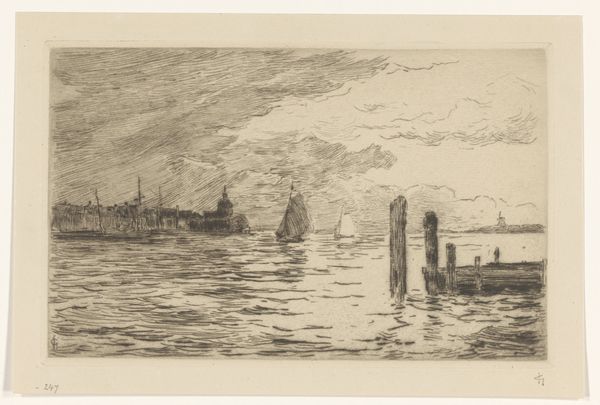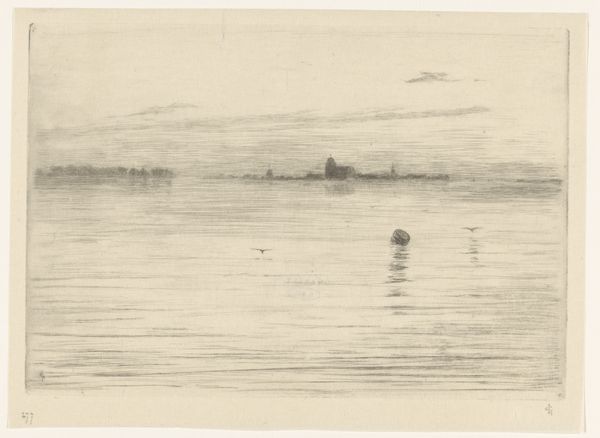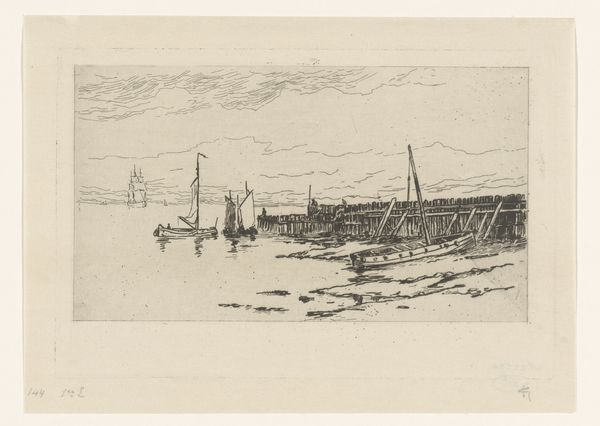
print, etching
#
dutch-golden-age
# print
#
etching
#
landscape
#
realism
Dimensions: height 159 mm, width 254 mm
Copyright: Rijks Museum: Open Domain
Curator: There’s something incredibly still about this print, almost meditative. Editor: Indeed. We're looking at "Gezicht op de Schelde bij ochtend," or "View of the Scheldt at Morning," an etching created between 1889 and 1902 by Carel Nicolaas Storm van 's-Gravesande, housed here at the Rijksmuseum. Curator: The ship on the water, the quiet coast, it really is evocative. What strikes you immediately? Editor: The monochromatic palette is quite powerful. The gray tonalities definitely evoke a feeling of an early dawn and conjure themes related to industrial development and its impact on maritime culture during this period. I think the ship on the water can symbolize progress or potentially exploitation. Curator: Yes, progress often carries a shadow, doesn't it? For me, the ships are symbols of movement, commerce, exploration… they have held such meanings for centuries. Notice the reflections, how they double the ship and link it to the water. And then, your eye moves to those structures on the coast... What is it, the remains of a pier? A breakwater? The remnants suggest something older being replaced. Editor: That coastline tells a story of change, absolutely. We have the industry coming in, altering ancient systems. We could explore how that might echo broader class dynamics, this kind of progress and development generally benefitting the wealthy, or impacting vulnerable coastal communities that depend on the sea and now must share its wealth with the industrial interests arriving on those ships. Curator: It could, but is it possible it tells no story beyond that of one ordinary sunrise, captured with remarkable skill? What do you make of the choice of etching, the texture the printing brings to it? Editor: Etching brings a kind of accessible quality to this seascape. But if you consider this within a larger context, you see echoes of global trade during the turn of the century and all its attendant challenges and consequences. Curator: It truly makes one contemplate how different eras imprint themselves onto the same scenes. Editor: Art holds layers of potential readings if we let it. It’s up to each of us, I suppose, to chart those waters.
Comments
No comments
Be the first to comment and join the conversation on the ultimate creative platform.
